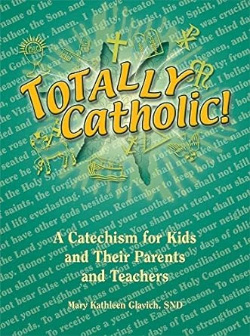 The first chapter of my new book out this month, Voices: God Speaking in Creation, is “Manger.” It makes a fitting post this week as we celebrate Christmas . . .
The first chapter of my new book out this month, Voices: God Speaking in Creation, is “Manger.” It makes a fitting post this week as we celebrate Christmas . . .
“And she gave birth to her firstborn son and wrapped him in bands of cloth, and laid him in a manger” (Luke 2:7).
Jesus could have been born at home in Nazareth and placed in a wooden crib fashioned by his carpenter-father, Joseph. Instead, because he makes his appearance on Earth while his mother and father are en route, he has no suitable place to lay his head. This circumstance is prophetic, for more than thirty years later, as an itinerant teacher Jesus will claim, “Foxes have holes, and birds of the air have nests; but the Son of Man has nowhere to lay his head” (Matthew 8:20).
A manger is a feeding trough for animals. The French word manger means “to eat.” In the stable or cave where Mary and Joseph stay because the inns are filled, the manger serves as a makeshift crib for Mary’s baby, the Redeemer. God’s propensity for foreshadowing comes into play here. Not only is Jesus, who is our Life-Giver, laid in a feeding place, but his birthplace is Bethlehem, a town whose name means “House of Bread.” It is as though God goes out of his way to underline that he is Bread for the world.
Eating is as essential for life as breathing. Daily we refuel ourselves with food. Omitting meals for any length of time leaves us weak and malfunctioning. No wonder we pray in the Our Father, “Give us this day our daily bread.” We look to God for life. When Jesus spends his first hours in a manger, he indicates that he is our bread, our sustenance. Without him, we can’t survive. Interestingly, D.T. Niles in That They May Have Life defines evangelization, bringing others to know Jesus, as “one beggar telling another where to find bread.”
As Jesus’ journey on Earth began with wood, so did it end—not with the warm, welcoming wood of the manger, but the rough wood of the cross. This wood too is associated with bread. The body of Jesus nailed to the cross made efficacious his words of the preceding evening when he held bread in his hands and declared, “This is my body.” The cross is the wood through which he became our source of eternal life.
As a good parent, God has always provided bread for his children. In Old Testament times when the world faced a famine, God raised up the patriarch Joseph to store enough Egyptian grain to feed the chosen people and other nations. Centuries later, as the Israelites trekked through the desert on the way to the Promised Land, again they faced starvation. Yahweh had compassion on them. Daily during their forty-year sojourn to Canaan he rained down bread from heaven called manna.
Then in New Testament times, when Jesus held the crowd’s rapt attention for hours and they grew hungry, he was aware of their need and had compassion. He astounded them by multiplying bread in abundance. The Gospels give us no fewer than six accounts of the picnic of bread and fish Jesus provided. And Jesus continues to feed the hungry through his Church. After he ascended into heaven, one of the first decisions his followers made was to appoint seven deacons to oversee the distribution of food. Today Christians serve meals at soup kitchens and bring them to the homebound, work at hunger centers, and donate food for people in need.
In this century, Jesus continues to nourish people with bread. Whenever we share in the Eucharist, we are fortified and energized for our particular journey on Earth. As really as Jesus slept in the manger on Christmas night, as really as he hung on the cross on Good Friday, Jesus, now risen, comes into us when we partake of this sacrament. As food and drink he unites himself with us, and we become like him. But becoming like him means becoming bread for others.
To be bread for others is to have compassion on them in their hungers. When someone hungers for attention, we are there to listen. When someone hungers for affirmation, we are there to encourage and support. When someone hungers for understanding and sympathy, we are there to give solace. When someone hungers for justice, we are there to set things right. In the words of Caryll Houselander, “The ultimate miracle of Divine Love is this, that the life of the risen Christ is given us to give to one another, through the daily bread of our human love.”
Fed at the Eucharistic feast, we find our desire to be bread is intensified. We long to bring life to others. That is why St. Teresa of Calcutta could instruct her novices, “Let the people eat you up.” That is why, in anticipation of being thrown to wild animals in the arena, St. Ignatius of Antioch, who loved the Eucharist, could say of himself: “I am the wheat of Christ. May I be ground by the teeth of beasts to become the immaculate bread of Christ.” It is only in the Eucharist that we acquire the power, the wisdom, the courage, and the love to satisfy the hunger of the people around us and in distant lands.
The manger brings to mind hospitality, for it receives the child when the inns are closed to him. The child grows up to become the greatest and most gracious host the world has known. Jesus is a hospitable person from the beginning to the end of his public life. At the outset of his ministry, two of John’s disciples spend the afternoon at his house. After the resurrection, he cooks fish on the shore and serves breakfast to the apostles who have been fishing all night. Jesus also enjoys the hospitality of others, frequently visiting Lazarus and his sisters, Martha and Mary. During his ministry in Capernaum, he makes Peter’s house his home. One day he even invites himself to the house of Zacchaeus for dinner! Jesus socializes with Pharisees, tax collectors, and sinners; and he chides the Pharisee Simon for failing to perform the courtesies due to a guest.
Jesus befriends the outsiders. His doors are open to everyone: the poor, the lonely, foreigners, lepers, and all those whom society ignores and scorns. He makes them feel welcomed and relaxed and restores their dignity by his love and care. Jesus requires a like hospitality in us, his followers, revealing that we will be judged on the way we receive the hungry, the thirsty, the naked, the stranger, the sick, and the imprisoned. Jesus was all of these when he came into the world at Bethlehem, and he was all of them when he left it. He is all of them today.
As a newborn babe, Jesus was hungry, thirsty, naked, and weak from the ordeal of being born. He was a stranger in the town of Bethlehem. His divinity was imprisoned in flesh. On Calvary, as a condemned man nailed to a cross, Jesus was hungry and thirsty from the loss of blood, and he was naked. He was so weak from the nightlong torture of interrogations, whippings, and thorns piercing his head that he fell carrying the cross and required Simon of Cyrene’s help. In Jerusalem he was a stranger, an outcast, and a prisoner. Today Jesus suffers in his brothers and sisters.
A Spanish story tells of a priest searching in antique shops for a large replica of the crucified Christ. He comes across a Christ-figure removed from the cross and broken. Half of one leg is gone, an arm is missing, and the face is no longer discernible. Yet, the priest is strangely attracted to and moved by the figure, and so he purchases it.
That night he speaks to his broken Christ, asking, “Who did this to you? Is he still alive?”
Jesus answers, “Quiet! Forget the one who did this to me. I have already pardoned him. What is the greater sin—to mutilate an image of wood or to mutilate my image in the flesh? You grieve over a broken wooden image while stretching forth your hand to harm the living Christs who are your brothers and sisters.”
When the priest suggests having the disfigured Christ restored, the Lord replies, “No. When you see me broken, you will think of the many people oppressed, tortured, and broken. They are without arms because they have no possibility of work, without feet because so many paths are closed to them, without a face because their honor has been taken from them. Many Christians who show devotion to a beautiful Christ forget him in their suffering fellow men and women.”
The story teaches that when we welcome poor and marginalized people, we welcome Jesus. St. Pope John Paul II enlightened us as to how to act toward them: “You must never be content to leave them just the crumbs from the feast. You must take of your substance and not just of your abundance in order to help them. And you must treat them like guests at your family table.”
The way we treat guests is the way we should always treat one another. How do we treat guests? We do not take them for granted. We are anxious that they feel at home with us. We are solicitous for their needs and willing to go all out for them. We accept them as they are and overlook their faults. We are polite, listen to them attentively, and laugh at their jokes, including those we’ve heard before. We put our best foot forward. Just as Christ refuses no one who comes to him, we Christians are to be universal in our hospitality. Then someday we will hear him say to us: “Welcome to my Father’s house. I have prepared a room for you.”
Most obviously, the manger symbolizes poverty. God certainly could have planned a more plush setting for his entrance into the world. Somehow, though, the stable with its smells, crude crib, earthiness, and simplicity is exactly right. Jesus identifies with the poor and lowly. His mission is to bring the good news to the poor (Luke 4:18). Even now he is more often found in huts than in mansions. He more freely mingles with those who have small incomes and large, generous hearts than with those whose millions are poured into glorifying themselves. In the end, wealth is worthless unless we give it away. Besides, only then will we have room in our house for the King of the Poor.
The manger also teaches us to be open to new roles in life. For years before the coming of Jesus, some tree had silently grown and yielded the wood that a craftsman shaped into a feeding trough. But then it is called to a new and sublime state. Mary or Joseph exercise creativity, and the manger is converted into a crib for the Son of God. The baby it holds is also the result of a transformation:
Let the same mind be in you that was in Christ Jesus, who, though he was in the form of God, did not regard equality with God as something to be exploited, but emptied himself, taking the form of a slave, being born in human likeness. Philippians 2:5–7
How willing are we to slough off our old, comfortable selves and allow God to change us and use us for new tasks? Resisting God’s efforts to recreate us may mean missing the opportunity of a lifetime. Trusting enough in God’s goodness and love to give him a free hand with our lives can lead to marvelous, unexpected things.
When Mary’s angelic visitor proposed to overturn her marriage plans and she responded, “Yes,” a world was saved. We might never have heard of St. Teresa of Calcutta if she hadn’t left her original religious community and struck out on her own. St. Ignatius of Loyola, who was trained to be a soldier, turned away from the military life and became a leader in the spiritual life and the founder of the Jesuits.
When the Holy Family departed from the stable, the manger became a common trough again. It was needed to feed the animals. But thanks to St. Francis, who initiated the custom of setting up the crêche for Christmas, the shining moment of the manger is remembered each year.
MERRY CHRISTMAS!
For Reflection and Discussion
- The infant Jesus is laid in a manger in Bethlehem, which foreshadows that he is bread for the world. What event has occurred in your life that some people might call a coincidence but is actually God carrying out a plan for you?
2. God provides our food. What is your favorite meal? How do you thank God for your food?
- How have you been “bread for others”? How could you be?
- When have you undertaken a new role in life? What was the result?









2 Responses
Looks like I’m somehow getting your columns
Again.
Nice piece.
Merry Christmas.
Did you get your “Family Angel?”
Joe
Glad you’re tuned in again, Joe! Yes, my angel is charming. Thank you!